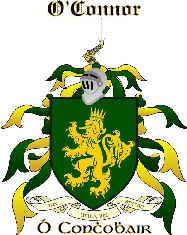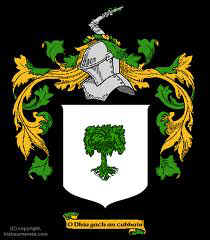|
|
|
|
_________________________________________
Historical
Fact
In
the fall of 1774, John O'Connor's (also recorded as Connor) son Jacob
was sent to
Germany
to purchase flint and powder for a possible problem in the near
future. With the British hieagarity in the
Boston
area and the un-authorized purchase of such items, it was decided
to bring the supplies in as machine parts for the grist mill and new
knitting mill. If caught John and his father could be hung and the
family business taken in the process. The
cost of the supplies was to be covered per the Continental Congress upon
receiving the items in good order. The powder and flint was sent through
several ports and delivered as promised to various locations in the
colonies,
Concord
being one location. This bill has never been paid; an offer was
made in 1951 with the standard 6% interest rate from 1774 to that date.
But was rejected because the original interest rate was agreed upon at
24.5%, family members involved with the court action, felt it is still
legal and binding, the case still hangs on. Additional offers have been
made but still refused as of 1995. I guess those involved in this issue
have plenty or they would have settled years ago, now an issue of
promises not honored.
An
interesting family story about gun building in
England ;
Charles E. Hanson, Jr. wrote: "The
bulk of the trade guns, even though stamped
LONDON
on the barrel, were actually produced during a beehive of activity
in the industrial area of
Birmingham ,
England
.The extensive firearms trade not only produced for the North
American export business, but
Africa
,
India
and the military as well.
London
provided keen competition, but
Birmingham
superseded the business because of an extensive supply of coal,
raw materials, and an active labor force. Factories we are familiar with
today were virtually non-existent during this period, but never the
less, production lines came from family type structures, each adding to
the completed process. Consider multitudes of separate tasks
accomplished by individuals, which were finally brought together to an
assembly source. Hence we find Northwest Guns with similar parts, but
stamped with different makerís names such as Whately, Grice, Chance,
Barnett, Sharpe and others. For example, separate groups and sub-groups
produced locks. Sawyers and woodcutters yielded the stock material.
Barrel forgers, welders, and reamers produced that element from the
forge and anvil. Stock in letter's set in the parts, and then came the
filers, polisher's, browner's, and even small tasks such as barrel pin
forgers. The end result yielded an inexpensive firearm, built for the
trade, and embellished with the makerís name.......
This is where one family member (Jesse Kersey) was found - a
"filer" and an indentured servant at the age of 16, employed
by the firm of "Wilson & Son"
Birmingham ,
England
at the corner of
Newton St.
and
Steelhouse Road
from 1771 to 1777, before making his way to the
New World
in 1779.
After a period of time near "Bucks Run", about 4 miles
west of Coatsville, PA a small Iron Works was established with several
residents, one of those members was our Jesse Kersey (the
"filer" from Birmingham, England), another Moses Coates. The
idea was in time to develop a foundry for mill parts, needed by the
family mills in MASS.
By 1810 Coates and Kersey had moved on to greener pastures with
Isaac Pennock, starting another foundry on the
Brandywine
River
, "The
Brandywine Iron Works". Nothing more was recorded of what ever
happen to the original foundry they had started a few years earlier.
Nothing else mentioned of these two gentlemen, or were they bastards in
the familyís eyes? Did or didnít Jesse serve out his indentured
servant time and decided to disappear before being taken back?
_________________________________________
Page
xxx
|
|




